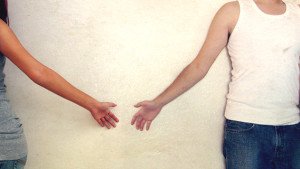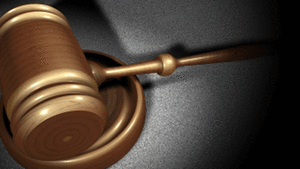I was a sickly child. If I wasn't catching a humble cold, it was something more exotic, like whooping cough or bronchitis.
Adding to this was a constant struggle with asthma. For many years my most faithful companion was a Ventalin puffer, and it became instinctual to reach for it at the first sign of an attack.
Lying on a couch while friends laboured in class was something I became accustomed to and, like any kid, it was something I enjoyed (and even faked once or twice). But I soon tired of endless, mindless cartoons and my time-off turned into the most lonely hole you could imagine.
When I didn't turn up for school, my classmates learned not to be surprised.
My nickname “Snotty” still sticks today.
Snotty I was, and snotty I am.
I'd just begun high school when I was struck with what was soon diagnosed as a combination of glandular- and Ross River fevers. This came on top of having just recovered from the previous year's bout of whooping cough—I was living up to my reputation: when I get sick, I do it well.
The illness made me tired and sore, with an incessant aching in my bones and stiff, creaky joints. To this day getting out of bed is like waking to a drum solo— creaks, cracks and pops firing off in all directions. Each day I would waken late in the morning to an empty house, drag myself and my quilt wearily to the TV, sleep there, wake for lunch, sleep some more, wake for tea, and then head back to bed.
As days turned into weeks watching the arms of the clock slowly—and I mean slowly—revolve was too painful, so, instead, time was marked by the sad progression of daytime TV, from Oprah to the midday movies to soapies, and then hyperactive preschool programming.
My parents were at work and my brother and all my friends at school. There was nothing I could do to join them, constantly locked in my semi-sleep state and exhausted by a walk to the letterbox.
The monotonous weekly routine turned into months. Nothing, it seemed, could bring me out of it. Time was the only prescription any doctors could give, so I waited. I waited for the day that I could kick a ball or share a laugh with my friends again.
It was a blustery Thursday evening early in winter and my mother had just returned from a post-work shopping trip.
Coming into our lounge room she greeted me as she did every day with a compassionate smile and hug. She turned and stood beside me, her hands holding something out of my view, her smile spreading.
“I bought you something,” she said.
The excitement that I harboured failed to be articulated by the tired “Ohhh” that escaped my lips as she revealed her purchase. Into my view she brought the biggest, brightest slippers I'd ever seen. Shaped like a lion's paw, large nails stretched from the bright orange toes.
Sitting up, I said, “Oh, cool!” as emphatically as possible. I held the paws in my hands, examining the soft fur and curved nails before slipping them over my feet. It was the first time I'd smiled for a long while, and at least for a moment the dark cloud of monotony was broken. And I may have even forgotten I was sick.
For the next few days, the slippers never left my feet, and when they did the smell of stale sweat wafted up. I believe this experience marked the beginning of my road to recovery. What I was once convinced would be a never-ending illness was now conquerable; what were once dark, lonely days were now brightened by the friends on my feet. Amazingly, within a few weeks, I attending school once again and, slowly, my life returned to normal.
Eight years on, I still have those slippers sitting in my cupboard. Granted, they're too small for my feet these days, but I've been known to squeeze into them simply to remember how much they meant.
And while I still catch the odd cold and have to be careful about the amount of sleep I get, I'm a vastly healthier person.
Funnily enough, I don't miss the illnesses.
But whenever I don those orange slippers, I wonder that if slippers could cure me, shouldn't doctors be prescribing something similar to the many sick children of our world?






